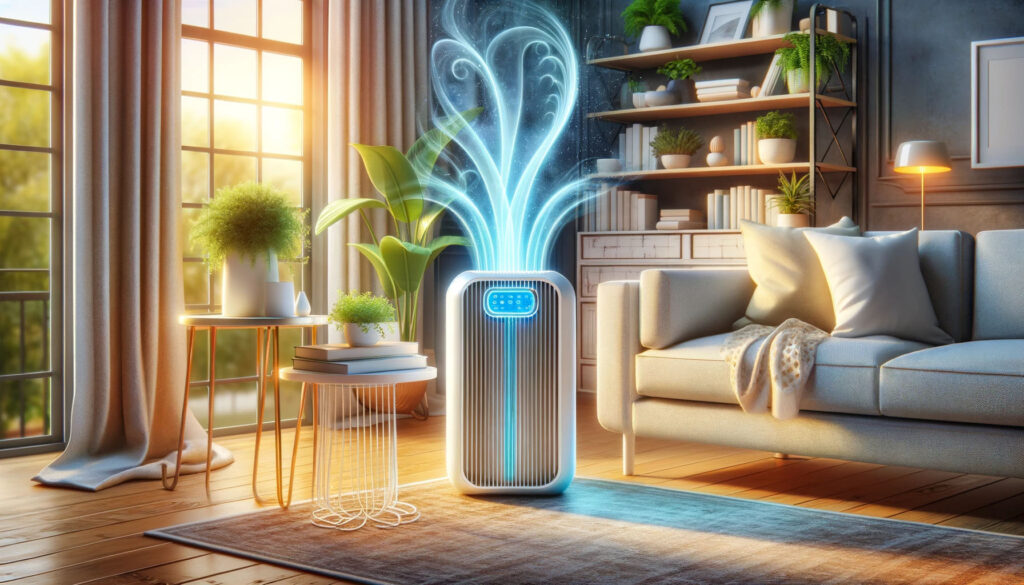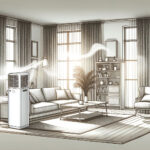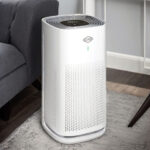Air purifiers with ionizers have gained popularity in recent years as a way to improve indoor air quality. These devices work by emitting negatively charged ions into the air, which attach to airborne particles and make them heavier, causing them to fall to the ground or be trapped by filters. While ionizers have several benefits, such as reducing allergens and odors, there are also potential health risks associated with their use. In this article, we will delve into the health effects of ionizers in air purifiers and uncover the key takeaways to consider.
Key Takeaways
- Ionizers in air purifiers can help reduce allergens and odors in indoor spaces.
- Negative ions emitted by ionizers attach to airborne particles, making them heavier and causing them to fall to the ground or be trapped by filters.
- Ionizers may produce ozone, a harmful gas that can irritate the respiratory system and worsen asthma symptoms.
- Exposure to high levels of ozone generated by ionizers can pose significant health risks, including lung damage.
- It is important to choose air purifiers with ionizers that have low ozone emission levels and to use them in well-ventilated areas.
Understanding Ionizers in Air Purifiers
How Ionizers Work
Ionizers in air purifiers work by releasing negatively charged ions into the air. These ions attach to airborne particles, such as dust, pollen, and pet dander, causing them to become negatively charged as well. The negatively charged particles then attract to positively charged surfaces in the room, such as walls or furniture, effectively removing them from the air.
Ionizers can also produce ozone as a byproduct. Ozone is a molecule made up of three oxygen atoms and can have both positive and negative effects on air quality. While low levels of ozone can help neutralize odors and kill bacteria, high levels can be harmful to human health.
The Environmental Protection Agency (EPA) of the United States has provided guidelines regarding the safe threshold of indoor ozone. They recommend that indoor ozone levels should not exceed 0.05 parts per million (ppm) over an 8-hour period. To put this into perspective, real-world measurements have shown that some ionizers can produce ozone concentrations much higher than this recommended level, especially in smaller or poorly ventilated rooms.
Exposure to ozone at levels even slightly above the EPA’s recommended threshold can lead to adverse health effects. These include coughing, throat irritation, chest pain, shortness of breath, and the exacerbation of chronic respiratory diseases like asthma. Prolonged exposure to low levels of ozone can also lead to more severe respiratory conditions and can compromise lung function.
To prevent the potential negative effects of ozone, many ionizers are equipped with ozone sensors that monitor and regulate ozone levels. Some ionizers also have multiple settings, allowing users to adjust the ionization level according to their preferences and needs.
Overall, ionizers in air purifiers provide an additional method of air purification by removing airborne particles through the process of ionization.
The Benefits of Ionizers
Ionizers in air purifiers offer several benefits:
- Improved air quality: Ionizers help remove pollutants and allergens from the air, such as dust, pollen, and pet dander.
- Odor elimination: Ionizers can effectively neutralize unpleasant odors caused by cooking, smoking, or pets.
- Mold and bacteria reduction: Ionizers can help inhibit the growth of mold and bacteria in the air, creating a healthier environment.
- Enhanced respiratory health: By reducing airborne particles, ionizers can potentially improve respiratory conditions such as asthma and allergies.
Tip: When using an air purifier with an ionizer, it’s important to regularly clean and maintain the device to ensure optimal performance and effectiveness.
- Energy efficiency: Some ionizers are designed to consume less energy compared to other air purification technologies, making them a more environmentally friendly option.
- Quiet operation: Many ionizers operate silently, allowing for undisturbed use in bedrooms or offices.
Potential Health Risks of Ionizers
Ionizers in air purifiers have been praised for their ability to remove harmful particles from the air, but they also come with potential health risks that should be considered. Ozone is one of the main concerns associated with ionizers. While some ionizers claim to produce only small amounts of ozone, prolonged exposure to even low levels of ozone can have detrimental effects on respiratory health. It can irritate the lungs, trigger asthma attacks, and worsen existing respiratory conditions.
Another potential health risk of ionizers is the production of negative ions. While negative ions are naturally present in the environment and can have some positive effects on mood and well-being, excessive exposure to high levels of negative ions produced by ionizers can lead to negative health effects. Some studies have suggested that high levels of negative ions can cause headaches, dizziness, and fatigue.
To minimize the potential health risks of ionizers, it is important to use them in moderation and ensure proper ventilation in the room. Additionally, choosing air purifiers with low ozone emission and negative ion production can help mitigate the risks. It is always recommended to consult with a healthcare professional before using ionizers, especially for individuals with respiratory conditions or sensitivities.
Conclusion
In conclusion, ionizers in air purifiers have become increasingly popular for their ability to remove pollutants and improve indoor air quality. They work by generating negative ions that attach to airborne particles, causing them to become heavy and fall out of the air. While ionizers offer several benefits, such as reducing allergens and odors, there are also potential health risks to consider. Ozone production is a concern, as high levels can irritate the respiratory system and worsen asthma symptoms. It is important to choose air purifiers with low ozone emissions and use them in well-ventilated areas. Additionally, individuals with sensitive respiratory conditions should consult with a healthcare professional before using ionizers. Overall, understanding the benefits and risks of ionizers can help individuals make informed decisions about their indoor air quality and health.
Frequently Asked Questions
What is an ionizer in an air purifier?
An ionizer is a component in an air purifier that releases negative ions into the air to neutralize pollutants and improve indoor air quality.
How does an ionizer work in an air purifier?
An ionizer works by emitting negative ions that attach to airborne particles, causing them to become negatively charged. These charged particles then stick to nearby surfaces, effectively removing them from the air.
What are the benefits of using an air purifier with an ionizer?
Using an air purifier with an ionizer can help remove a wide range of pollutants from the air, including dust, pollen, pet dander, mold spores, and smoke particles. It can also help improve indoor air quality and reduce allergic reactions.
Are ionizers safe to use?
Ionizers are generally safe to use, but some individuals may experience negative health effects, such as respiratory irritation or ozone-related symptoms. It is important to follow the manufacturer’s instructions and use the ionizer in a well-ventilated area.
Do ionizers produce ozone?
Yes, ionizers can produce ozone as a byproduct of the ionization process. However, the amount of ozone produced is usually within safe levels specified by regulatory standards. It is important to choose an air purifier with low ozone emission if you are concerned about ozone levels.
Can ionizers remove viruses and bacteria from the air?
Ionizers can help reduce the concentration of viruses and bacteria in the air by causing them to stick to surfaces. However, they may not completely eliminate all pathogens, and other methods such as filtration or UV sterilization may be more effective for this purpose.







